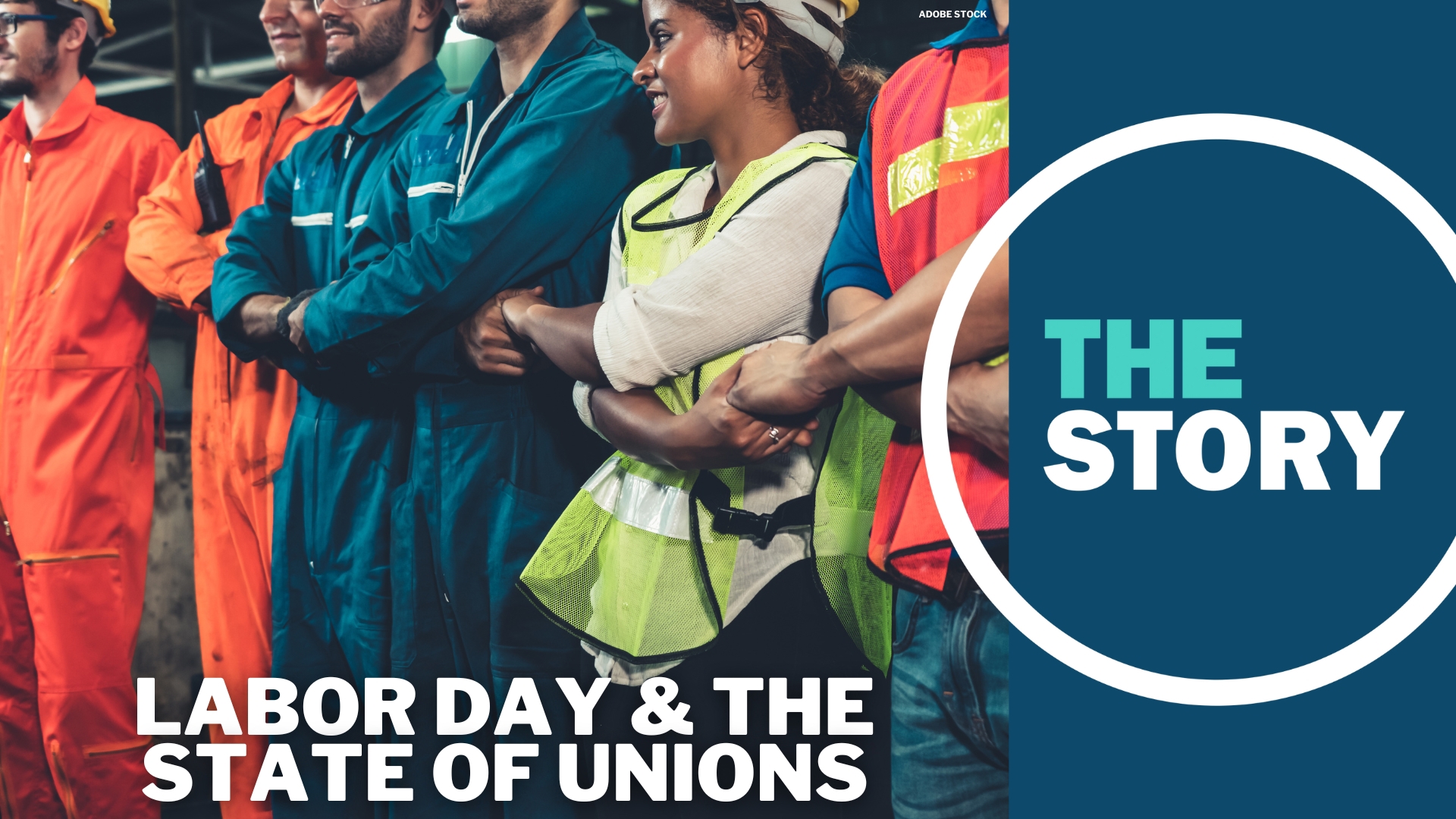PORTLAND, Ore. — As the United States celebrates Labor Day, a holiday marking the achievements of organized labor, unions themselves are in paradoxical moment. Public support for unions is high — somewhere around 67%, according to a 2023 Gallup poll — but membership has yet to rebound after years of erosion.
The most recent full year numbers from the Federal Bureau of Labor Statistics are from 2023. The data shows that the share of all wage and salary workers in America who were union members stood at 10% — down slightly from 2022, when it was 10.1%.
In population terms, that amounts to 14.4 million union workers as of 2023.
The first year that the federal government began tracking comparative numbers was 1983, when unions were significantly stronger. At the time, 20.1% of the workforce consisted of union members, or 17.7 million people.
The highest membership rate in 2023 was in the public sector, at 32.5%. That's more than five times the private sector, which stood at just 6%.
Industries with the highest share of union workers included "education, training and library workers," with 32.7%, and protective service occupations like police and firefighters with nearly 32%.
Union workers had median weekly earnings 14% higher than non-union workers.
Among the states, Hawaii and New York had the highest union membership rates, at 24% and 21%, respectively. The Carolinas had the lowest membership rates, at roughly 3% for North Carolina and 2% for South Carolina.
On the West Coast, union membership is above the national average. Washington state has 576,000 union members, representing 16.5% of the workforce. California has 2.5 million union members, or 15.4% of workers. While it has the smallest population, Oregon also comes in at the bottom of the pack for union workers, with 255,000 members or 14% of the workforce.
KGW's Pat Dooris is one of those union members, and has been for 34 years. KGW is the only news station in Portland where reporters and anchors are union members, belonging to SAG-AFTRA.
The union vote
As the 2024 presidential race heats up, both major parties are courting the union vote. Republican vice presidential candidate JD Vance spoke in Boston last week to the city's firefighters union.
"President Trump and I are proud to be the most pro-worker Republican ticket in history," Vance said, greeted with a chorus of boos and a few cheers. "And I want to talk about why we're fighting for working people, why we're going to fight for unions and non union alike."
In Detroit, Democratic presidential candidate Kamala Harris celebrated Labor Day with union workers.
"For generations in Detroit and across our nation, the brothers and sisters of labor have stood together to righteously demand fair pay, better benefits, and safe working conditions," Harris said. "And let me say, every person in our nation has benefited from that work."
Not all Americans support unions or their individual battles, but they indisputably remain a powerful influence in parts of the U.S. and in Oregon, particularly when it comes to public employees.
SEIU represents roughly 22,000 of Oregon's 45,000 state workers. In an open letter posted last July, the union said it won workers two cost of living raises, one in December of 2023 and another beginning January 1, 2025. The raises total 13%, and workers also got a one-time $1,500 bonus and were eligible for normal raises on the basis of merit.
Union negotiators were proud of the cost of living increases, saying, "Our 13.5% COLA over two years is the highest of any recent state employee contract we could find in the country!"
And the letter makes clear that Oregon's elected officials, some of whom received significant help from unions in winning those elections, helped make those increases possible.
"If Tina Kotek was not our Governor and pro-worker majorities weren't in both the House and the Senate, things would look very different," SEIU said.

